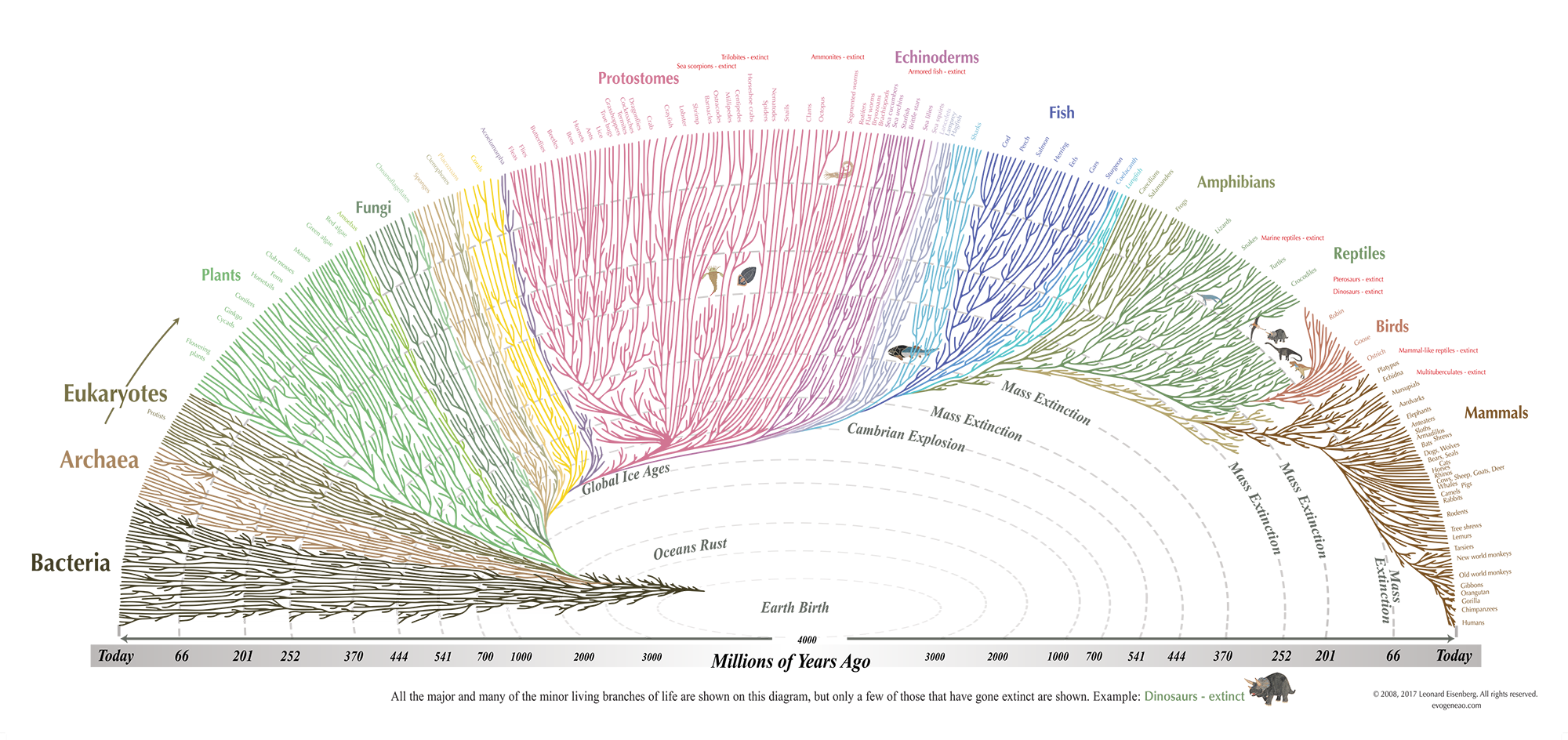
The Tree of Life: All living things are related by common ancestry. This diagram shows the evolutionary relationships among major groups of organisms.
Credit: NASA Astrobiology / Wikimedia Commons
Scientific Definitions
Observable Facts Supporting Evolution
- Life forms show variation within populations due to genetic differences.
- These variations are heritable, passed from parents to offspring via DNA.
- The fossil record reveals changes in life forms over geological time, including extinct species and transitional forms.
- The geographic distribution of species reflects their history, with related species often found nearby.
- Organisms share fundamental genetic, molecular, anatomical, and behavioral similarities.
The theory of evolution scientifically explains these interconnected observations about life's diversity and history.
Conclusion
As these definitions make clear, evolution is a unitary process operating at multiple scales. The scientific community is unanimous in recognizing that the mechanisms that drive small-scale changes (microevolution) are the same mechanisms that, over longer time periods, produce large-scale changes (macroevolution) including the origin of new species, genera, and higher taxonomic groups.
The distinction between microevolution and macroevolution is simply one of time scale and degree of change, not a difference in mechanism. Attempts to accept microevolution while rejecting macroevolution are inconsistent with the scientific understanding of evolutionary processes.